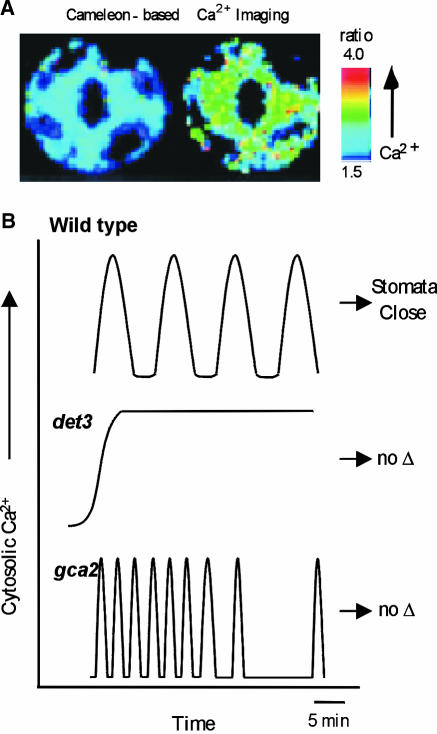Figure 5.
The Use of Arabidopsis Mutants and New Imaging Techniques Leads to a Better Understanding of Calcium Signaling.
(A) Cameleon indicators expressed in guard cells allow a ratiometric measurement of cytosolic Ca2+ changes (low at left and high at right).
(B) Mutants display abnormal Ca2+ signals that fail to trigger stomatal closure (Allen et al., 2000, 2001). In wild type (top), a variety of hormone or stress treatments trigger a series of Ca2+ oscillations that are followed by a prolonged closure of the stomata. In contrast, a steady state rise in calcium was observed in det3 mutants (middle) in response to treatments such as high external Ca2+ or oxidative stress (but not ABA and cold). Treatments that failed to produce normal oscillations also failed to trigger a prolonged stomatal closure. The stomatal closure response was also disrupted in the mutant gca2 (bottom). In this case, calcium signals occurred as an abnormal “high frequency” pattern of calcium oscillations. These results provide genetic evidence to support the hypothesis that a specific frequency of Ca2+ oscillations is required for a normal stomatal closure response.

